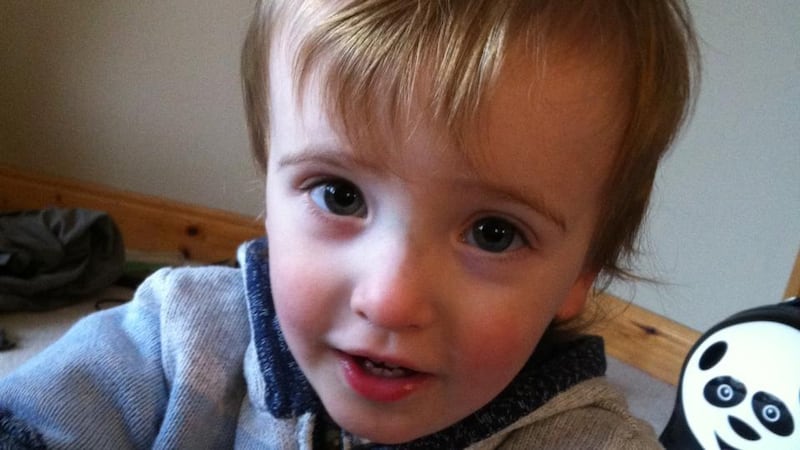When Gráinne Foley from Midleton, Co Cork, went for a scan in April, 2012, just over 28 weeks into her second pregnancy, she did not get the news she had been hoping for.
Her second son, John, had foetal growth restriction, a condition which carries a higher risk of cerebral palsy, bleeding in the brain and stillbirth, meaning the birth would have to be induced 11 weeks early.
“The bottom falls out of your world and you have a million questions: is he going to survive, what’s he going to be faced with if he does survive, what are the risks?” Gráinne recalls.

But despite the “whirlwind” which followed the diagnosis, Gráinne did not hesitate for a moment when she was asked to participate in an Irish study looking at foetal growth restriction.
The aim of the study, which began in mid-2010, was to find a distinction between foetuses with the condition and “normally small” babies in order to establish exactly when health professionals need to intervene to prevent serious health complications.
Prof Fergal Malone, chairman of Perinatal Ireland, consultant obstetrician and gynaecologist at the Rotunda hospital and RCSI professor of obstetrics and gynaecology, explains that, in the past, all babies in the bottom 10 per cent weight category were considered at-risk, affecting about 7,000 pregnancies in Ireland each year.
'Normally small'
"But after years of doing this we noticed that the vast majority of babies who are in that bottom 10 per cent size-wise, when they were born, were absolutely fine . . . they're what we would call 'normally small' or physiologically small," he says.
“What we’ve been after for years is to figure out, what is that proportion in that 10 per cent who are abnormally small, not just ‘normally small’ and that has been very tricky,” Malone says.
In order to address this problem, the Perinatal Ireland network, a consortium of six Irish hospitals and the Royal Jubilee Maternity Hospital in Belfast, began a study which incorporated 1,100 foetuses in the bottom 10 per cent weight category.
Follow-up tests
They followed their progress in detail using scans, blood tests, examinations of the placenta after birth and follow-ups for up to two years after the babies were born.
The research, which was funded by the Health Research Board and led by researcher and RCSI fellow in maternal foetal medicine Dr Julia Untersheider, found that those foetuses in the bottom 3 per cent weight category were at a much greater risk of foetal growth restriction.
The other big finding was that other foetuses in the lower 10 per cent weight category were “almost always going to be completely normal” unless the results of a particular ultrasound, a Doppler scan of the umbilical artery which monitors blood flow through the placenta, was abnormal.
Change obste
trics completely
According to
Malone, the research is “groundbreaking” and something that will “change obstetrics completely”.
“We’re enabling doctors to . . . with scientific confidence, pick out who are the patients in that bottom 10 per cent who really should be monitored carefully and who they can, with confidence, tell the patient, you can go away and go back to normal routine care,” he says.
It means doctors can now ascertain much more accurately which foetuses have foetal growth restriction meaning resources can be better targeted.
Avoiding needless inductions
In addition, Malone says it will obviate "needless worry" for up to 5,000 Irish women each year who previously required many more ultrasounds for the duration of pregnancy and who were sometimes induced early.
“We’re always anxious to avoid needless inductions of labour so this is hugely beneficial to normal pregnant women who previously might have been subjected to an induction of early labour because their doctors were worried about the size of the baby,” Malone says.
The research was one of just 80 research projects first presented at the international obstetrics meeting, the Society for Maternal-Fetal Medicine, in New Orleans in February and resulted in the publication earlier this month of the first
Irish Clinical Practice Guidelines on Foetal Growth Restriction
at a national obstetrics meeting at the Rotunda hospital.
Benefit others
Gráinne Foley, who addressed the medical professionals attending the Dublin meeting, says taking part in the study meant that what was a "horrible, negative experience" for them will now benefit others.
Meanwhile, John, despite being born just 29 weeks and two days into the pregnancy weighing just 1.1 kilos (2lbs and 6oz), turns two in May and is “absolutely flying”.
“He’s small but he’s absolutely completely with it . . . he understands everything – probably too much. Words are falling out of him. He’s a lovely little person.”











